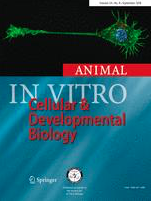 During the past half-century, the fundamentals of the science of cryobiology have evolved to the point where low temperatures are now used extensively as a means to protect and preserve biological systems during enforced periods of ischemia and hypoxia. In practice, preservation is achieved using either hypothermia without freezing or cryopreservation in which the aqueous system sustains a physical phase change with the formation of ice. Survival of cells from the rigors of freezing and thawing in cryopreservation procedures is only attained by using appropriate cryoprotective agents, and in general, these techniques are applicable to isolated cells in suspension or small aggregates of cells in simple tissues.
During the past half-century, the fundamentals of the science of cryobiology have evolved to the point where low temperatures are now used extensively as a means to protect and preserve biological systems during enforced periods of ischemia and hypoxia. In practice, preservation is achieved using either hypothermia without freezing or cryopreservation in which the aqueous system sustains a physical phase change with the formation of ice. Survival of cells from the rigors of freezing and thawing in cryopreservation procedures is only attained by using appropriate cryoprotective agents, and in general, these techniques are applicable to isolated cells in suspension or small aggregates of cells in simple tissues.
As efforts continue to work to standardize and optimize work flow related to the use of biologics in clinical and research settings, a working group of experts from academia and industry was convened to author a series of Best Practices articles covering a series of specific area in cell culture. One such article, written by Drs. J.M. Baust, L.H. Campbell and J.W. Harbell, addressed the topic of "Best Practices for Cryopreserving, Thawing, Recovering, and Assessing Cells".
Baust et al. introduce the subject: “Long term storage of cell stocks insures that cells are available for use whenever needed. Cryopreservation of cells is the method of choice for preservation of important or rare cell stocks. There are several factors to consider when establishing a protocol for freezing, thawing and recovery of cells after storage. These parameters may include cell concentration, cryoprotectant choice and concentration, and thawing rate among others. Further, the assessment of cell viability and/or function prior to and following cryopreservation is imperative in order to accurately determine downstream utility as well for optimizing the cryopreservation process."
The authors continue: “In addition to the physical impacts of freezing (ice formation, solute concentration and freeze induced dehydration) … there is also a biochemical/molecular based impact. … a result of several factors including (1) a decrease in available energy and metabolic activity, (2) biochemical pathway uncoupling and (3) activation of stress response pathways. The manifestation of this sub-lethal damage may not be evident immediately after thawing but may take several hours to days to be detected.” All these factors affect the overall survival of cells.
Summarizing the goal of the article, Baust et al state: “This chapter is designed to provide guidance and insight into developing robust and successful protocols for preserving cells that will preserve cell stocks and provide optimal cell yield and viability.”
For further information
In Vitro Cellular & Developmental Biology - Animal
News Archive

